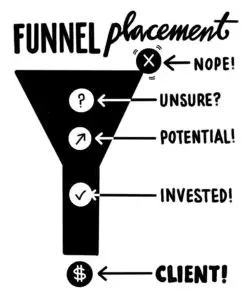
Search engine optimization can be a significant investment, and it often takes a significant amount of time to see its full results. It requires frequent monitoring and maintenance as well as adjustments to maximize your investment. One place many businesses overlook is lead conversion. After all, it’s not enough to just attract traffic to your website. Once they’re there, you need to convert them to paying customers or clients. Your traffic doesn’t do you any good until you’re able to turn it into active business.
There are a number of ways you can improve your conversion rate, and I recommend starting by looking at your website as though you were a customer. Does it answer your questions? Is it easy to find the contact information? Would you hire your business, based on your website? Answering these questions can give you quick insight into possible adjustments that may need to be made to your site. It’s also important to ensure that you’ve implemented strong follow-up and customer service offline as well. When a lead calls, do you answer the phone quickly or return their call within the hour? Do you respond to emails within 24 hours? Your response time makes a significant difference in whether the lead will choose to work with you or not. Begin by making any necessary adjustments to these things, and then move on to more technical solutions.
If you’re doing everything you can to create an easy-to-use website and a great customer service experience, it’s time to dive deep to discover how you can improve your conversion rate. Analytics give you data you can use to make educated decisions about what is and isn’t working well on your site so you can make effective improvements rather than guessing at what needs to change.
So what data should you be looking at? Here are a few tools I find helpful.
Call Tracking Software
Call tracking software allows you to track all of the calls that come into your business. It provides information like the zip code of the caller, where the lead originated, how long the call lasted, and even allows you to listen to the call. You can use dynamic number insertion (DNI) to determine where a call came from. DNI shows the customer a different number depending on what website they came from (Google, Facebook, etc.), which tells you where the lead originated so you know where to focus your SEO efforts. All of this information can be helpful to make effective adjustments to your website, marketing campaigns, and customer service.
Funnel Placement
Funnel placement helps you determine how invested a client or customer was before they converted from a lead. How many times did they visit your website? Someone who called on their first visit is higher in the funnel than someone who visited many times, while someone who visited the site and then left without contacting you abandoned the funnel. Where on your site this person left is important information, as it can give you insight into why they didn’t contact you. It may not be important why someone at the top of the funnel left, because it’s likely they quickly discovered your website didn’t provide what they were looking for. But if someone spent time looking through your site, and then decided to leave, there’s a chance something turned them away. Knowing what it is can help you make adjustments to avoid that happening in the future.
A/B Split Tests
Split testing is a great way to compare two options directly. Say you have two different contact forms and don’t know which will work best—perform an A/B split test. Create two versions of the web page and see which performs better over a set period of time. You can compare anything: images, calls to action, button text, size and placement of phone number, forms, design options like fonts and colors, content, page titles, and much more. Testing these things is important, because many of them are subjective, so getting the data on which works best will allow you to optimize your conversion rate. Note that when you compare two options, limit the number of changes you make on each version of the web page to only the options you’re testing. Otherwise, you may see better results from one version than the other, but you’ll have no way of knowing which aspect you changed created the effect. Using these tests is a great way to optimize many aspects of your site.
Ultimately, the best way to convert leads to clients is to provide a great user experience on your site, including a clear message and an easy method to contact you. Converting leads to clients or customers is the point where SEO turns profitable, so it’s worth putting in the effort at this step. Continue to learn from your analytics to increase your traffic and improve your conversion rate, which will result in more business and ultimately more revenue.




